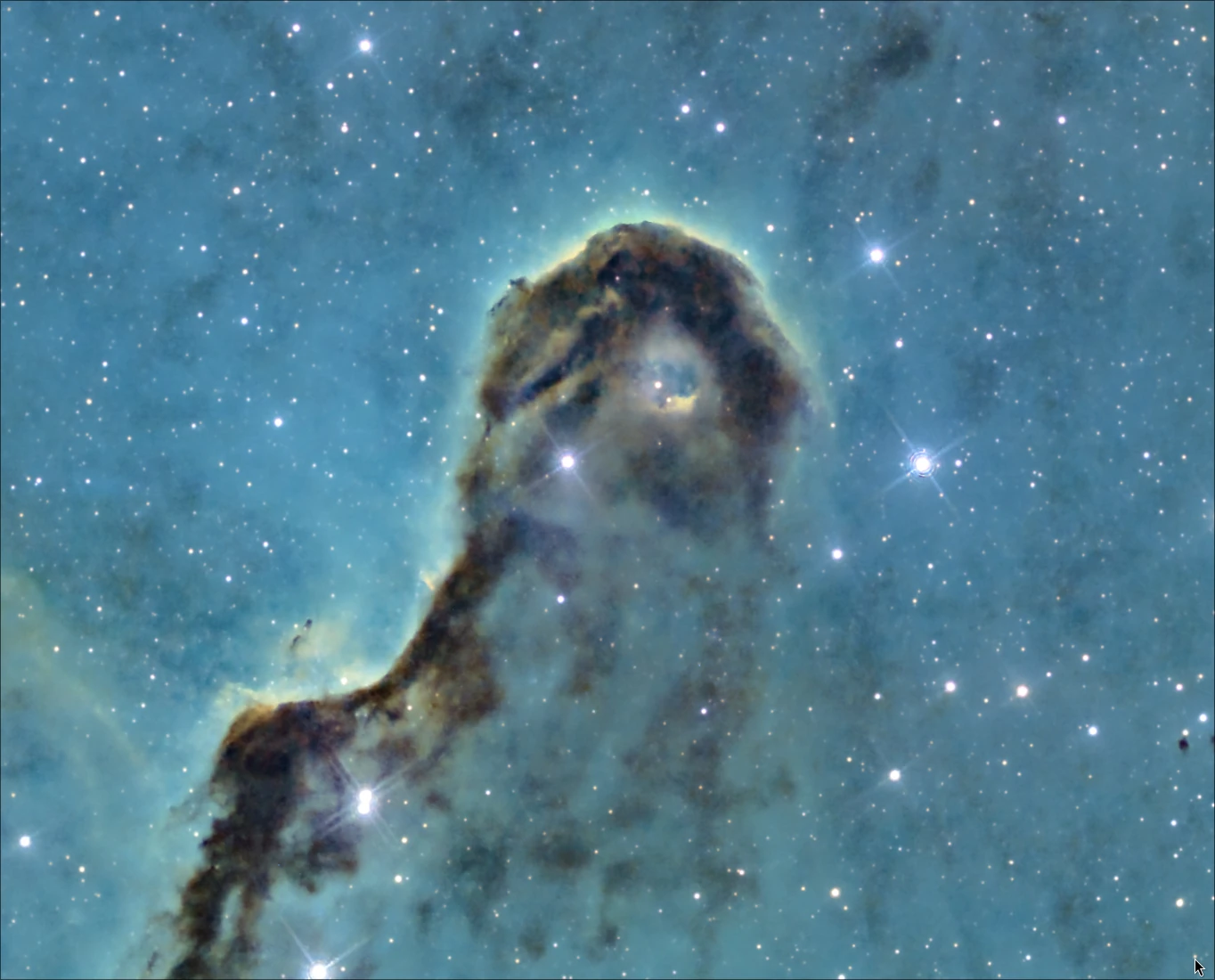IC1396 - A mosaic of The Elephants Trunk Nebula
Another record for my longest project yet. 64h of total exposure time isn’t something I have done before on a single target. The main “issue” with my Telescope is it’s “sort of” low field of view, making it very good for galaxies, but not so good for the big nebulas of our Milkyway which sometimes span over multiple degrees of the night sky in diameter.
Because of this, it usually takes at least a 2x2 mosaic to image some meaningful part of any nebula.
This allows me for a higher resolution, but less depths on nebulae compared to a more wide field telescope setup.
For this photo I decided to go with a 2x2 mosaic with 16h exposure time for each panel. Spending less time on H-alpha, which is very prominent and has much higher SNR compared to O-III or S-II spectral lines. This allowed me to get some more detail on the those fainter features.
For this image I went with a SHO palette, meaning Sulfur corresponds to red tones, Hydrogen to greenish tones and Oxygen corresponds to blueish colors.
Star forming region
In 2003, infrared telescopes discovered that this nebula is an active, star forming region. Containing several young stars (younger than 100'000 years) in the tip of the dark nebula. According to current theories, the nebula gets compressed through the strong ionizing forces of some of the very bright stars and the outward pressure from the newborn stars. This creates enough pressure for even more stars to be formed.
Around 250 young star systems have been identified in and around the nebula.
Note that many of these newly formed stars are engulfed by dark, dense clouds. Making it impossible to see them in visual light (my photo is purely in the visible spectrum of the light).
The Nebula
The nebula itself is located roughly 2400 light years from earth, spanning over 100 Light years in diameter. The trunk alone has a length of 20 Light years. The main source of its luminosity is a multiple system of blue stars (HD 206267).

In and around the nebula many dark dust structures (globules) can be found, some of them small (zoom into the full-resolution photo at the top to see them) and some of them rather big (spanning over multiple light years).
The circular cavity
A very noticeable feature is the hole like cavity in the tip of the prominent nebula structure (which also resembles an elephants trunk, hence the name of the nebula).

It seems that this cavity was formed through the outward pressure of two bright and older stars laying inside of it, pushing the gas outward and compressing it at the edges of the cavity. Leading to densities high enough to form new stars.
